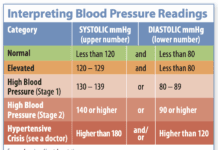– White and brown eggs are nutritionally the same. Shell color is determined by the breed of hen, with brown and red hens laying brown eggs.
– Egg grading is not determined by freshness, but by factors such as the quality of the white, absence of yolk defects, and shell cleanness and integrity. In general, however, a AA egg will stay fresh longer than an egg graded A.
– “Large” eggs average 2 ounces each. Sizes range from small (1.5 ounces) to jumbo (2.5 ounces).
– Independent reviews generally report no significant differences affecting consumer health between organic and conventional eggs. Organic standards require hens to have access to the outdoors.
– Store eggs, unwashed, with the pointier end down in their carton on a shelf inside the refrigerator. Avoid the fridge door, where temperatures vary more.
– Eggs’ expiration date is calculated based on when they were packaged (maximum 30 days from packaging to expiration), not when they were laid. The time between laying and packaging can be as little as a few days or as much as a few weeks. Eggs can generally be consumed even after the expiration date; the USDA says raw eggs in the shell can be safely stored in the fridge for up to five weeks.
– Fresher eggs have cloudier whites and rounder yolks less prone to breaking.
– Yolks with red blood spots are safe to eat, but eggs with pinkish whites should be discarded.
– Hard-boiled eggs, even unpeeled, spoil faster than raw eggs because the water removes a protective coating and exposes the shell’s pores to bacteria. Refrigerate unpeeled and eat within a week.
– A typical hen lays 200 to 300 eggs a year. US egg production exceeds 760 billion annually.
– All chickens, regardless of breed, belong to the species Gallus gallus domesticus.






















